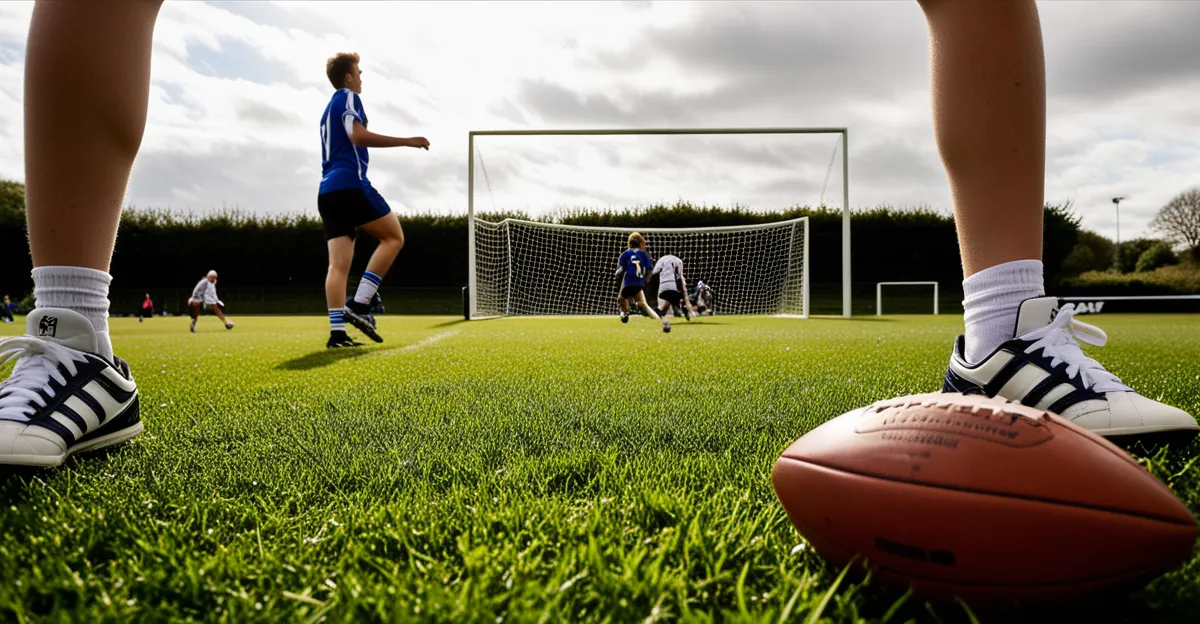Impact of UK Sports on Youth Physical Activity and Health
Participation in UK youth sports such as football, rugby, and cricket significantly boosts physical activity levels and offers substantial health benefits. Football, being the most popular sport among youth, encourages regular exercise frequency, with many youths engaging multiple times weekly, contributing to improved cardiovascular health and muscular strength. Rugby and cricket also promote endurance and coordination, although their participation rates are somewhat lower than football.
Statistics reveal that around 65% of UK youth engage in some form of organized sport, which correlates with better physical fitness and reduced risks of obesity and sedentary-related diseases. However, it is important to note some negative effects; intense sports involvement can sometimes lead to overuse injuries or burnout if not properly managed.
In the same genre : What Are the Emerging Trends in UK Sports for the Upcoming Season?
Overall, the influence of these sports on health is overwhelmingly positive, reinforcing the importance of structured physical activity in youth development. Fostering consistent participation not only supports physical wellness but also instills lifelong habits essential for maintaining health. Encouraging broader access and promoting balanced involvement in football, rugby, and cricket can enhance these benefits across the UK’s youth population.
Influence on Social Development and Peer Relationships
Team sports like football, rugby, and cricket play a vital role in youth development by fostering essential social skills such as communication, cooperation, and leadership. Participation in UK youth sports helps young individuals learn how to work effectively within groups, which boosts confidence and builds strong interpersonal abilities.
In the same genre : How do grassroots sports initiatives impact local communities in the UK?
Through consistent involvement in team sports, many youths develop lasting friendships and expand social networks within their communities. This sense of belonging often improves emotional well-being and encourages continued engagement in physical activity. However, participation rates also highlight some challenges; risks such as peer pressure and social exclusion can occur in competitive team environments, impacting some youth negatively.
Despite these challenges, structured support and inclusive coaching strategies typically reduce such risks, making team sports a powerful medium for social growth. Emphasizing teamwork and positive communication in UK youth sports cultivates better social integration, preparing young people for collaborative situations both on and off the field. Therefore, engagement in team sports is more than just physical activity—it is a meaningful contributor to social skills development and peer relationship building.
Effects on Academic Performance and School Engagement
Participation in school sports programs strongly correlates with improved academic outcomes among UK youth. Research indicates that students involved in physical activity through sports like football and rugby often show higher motivation and better concentration during lessons. Why does this happen? Physical activity boosts brain function, memory, and mood, which enhances learning capacity and school engagement. For example, schools with active sports initiatives report elevated attendance rates and reduced behavioral issues.
However, balancing education and athletics can be challenging. Time spent on training or competitions may sometimes conflict with homework or revision, potentially creating stress. This conflict requires careful planning by students and educators to ensure neither schoolwork nor sports suffer.
Successful programs emphasize structured schedules and promote teamwork within academic contexts, demonstrating that integration rather than competition between sports and schoolwork yields the best results. Supporting youths to manage both school and sports commitments ensures they reap the cognitive, physical, and social benefits of youth sports while maintaining strong academic performance.
Shaping Values and Lifestyle Choices
Participation in UK youth sports instills critical youth values such as discipline, respect, and fair play. These principles emerge naturally through structured training and competition, where adherence to rules and sportsmanship is essential. This environment promotes self-control and responsibility, translating into positive lifestyle habits beyond sports.
Engagement in football, rugby, and cricket also influences daily routines, encouraging consistent exercise habits and healthier dietary choices as young athletes seek to optimize performance. By establishing these patterns early, sports participation helps embed long-lasting health-conscious behaviors. For example, youths involved in team sports often prioritize balanced nutrition and regular sleep, recognizing their impact on both athletic and academic success.
Behavioral influences extend further through interactions with coaches and sports role models who exemplify dedication and ethical conduct. These figures inspire youths to set higher aspirations and make constructive choices in other areas of life. The combined effect fosters not only physical wellness but also holistic development that benefits young individuals socially and emotionally.
Through promoting values and guiding youth lifestyle decisions, participation in UK sports shapes well-rounded individuals poised for future success.
Trends, Challenges, and Policy Responses
Recent data on sport participation trends among UK youth reveal fluctuating engagement levels, with an overall slight decline in organized sports such as football and rugby. Factors influencing these patterns include shifting interests, increased screen time, and accessibility issues. Notably, gender disparities persist: boys generally participate more than girls in traditional sports, highlighting ongoing challenges in achieving equitable youth engagement.
Socio-economic background also plays a critical role; young people from lower-income families face greater barriers, including limited access to facilities and equipment. These inequalities can reduce participation rates and negatively affect physical activity and related health benefits for disadvantaged groups.
To address these challenges, targeted government policies and school programs have been implemented. These initiatives focus on widening access, promoting inclusive environments, and removing financial or logistical obstacles to involvement in sports. For instance, schemes supporting after-school activities or community clubs emphasize participation among underrepresented groups.
By monitoring youth engagement challenges and adapting policies proactively, the UK aims to sustain healthy lifestyles and maximize the positive impacts of sports for all young people. Ongoing efforts prioritize inclusivity and accessibility, essential for reversing declining participation and fostering lifelong physical activity habits.












